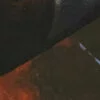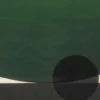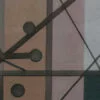My arrival in Edinburgh seven years ago was almost a blind date. Ever since a short visit with my parents as a teenager, I’d remembered the city as a castle on a rock atop a purple ocean.
This time, my happiness was instant, a destiny fulfilled. The castle was still here – everything was still here, because nothing changes here except in memory. I loved the way chimneys cast shadows on sunny afternoons, the way buildings were made to precede you and outlive you while housing you, as if you too will live forever. The haar that crept in from the sea. The cemeteries bumpy with centuries of flesh. The way locals asked ‘Where do you stay?’ and my neighbours invited me for a ‘fish supper’. The way nobody is too interested in you – a great British quality, this live-and-let-live discretion – and yet you end up talking with strangers in shops, because Edinburgh people have time. The worn stone steps that lead to unexpected passages of time. The palatial smugness of Morningside and the smashed-up people of Leith; the lanes where today’s best ideas were written down by men who walked through excrement because Edinburgh was not so big on hygiene. The sense of being in the centre of things yet not in the eye of the storm, an hour from London and Europe, a radio button away from the BBC, less than a century away from an empire . . . And you were simultaneously living in two countries, like a matryoshka doll, which was ideal. I was far from the concrete balcony of my childhood, but not so far that I felt removed from myself. I stayed.
Taken from ‘The Magic Place’ by Kapka Kassabova.
Photograph © Tibby Girl







